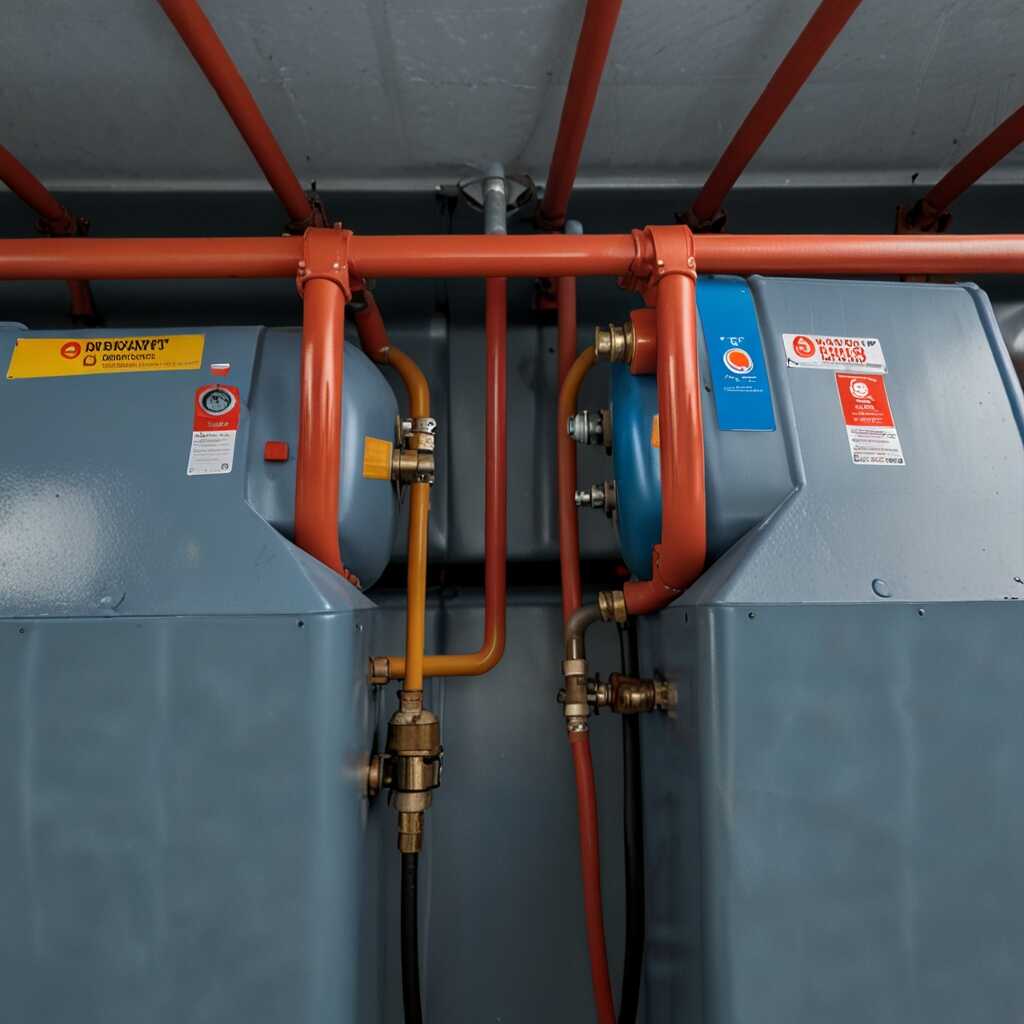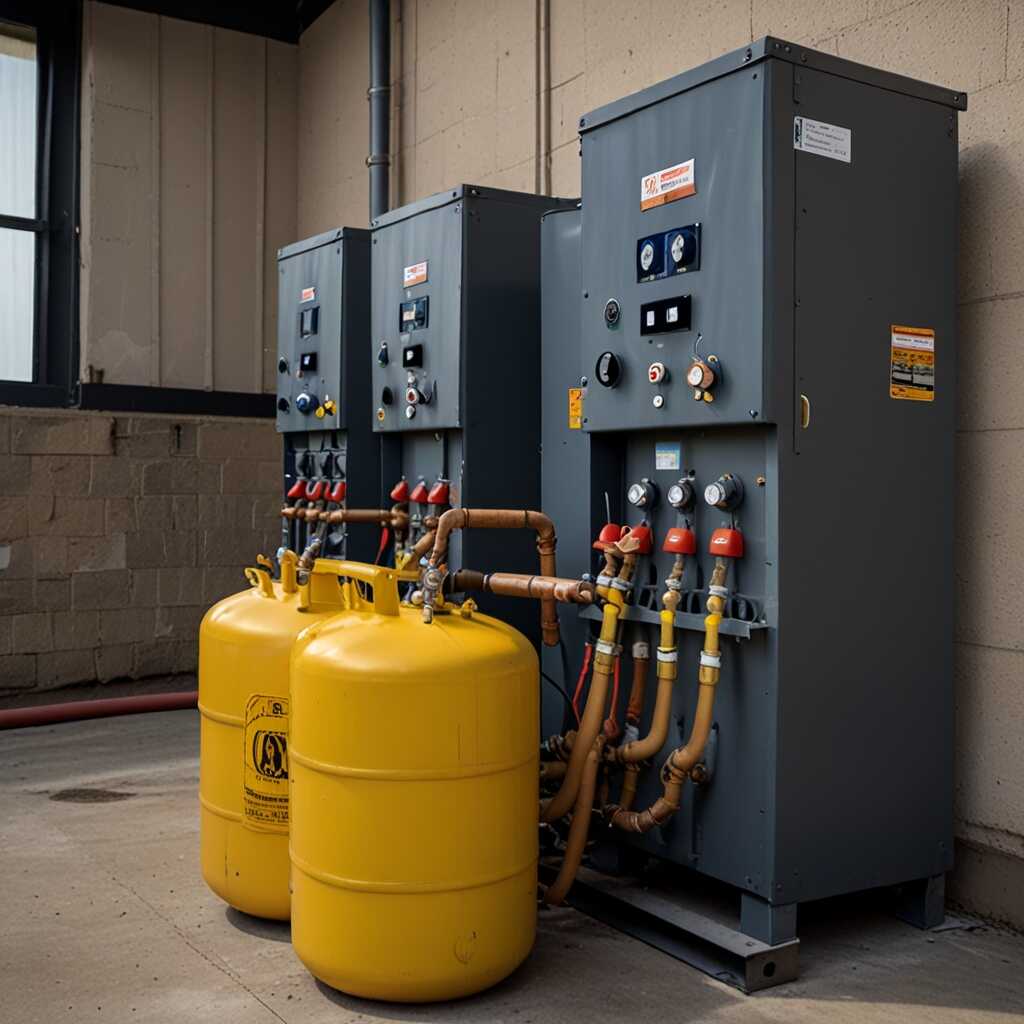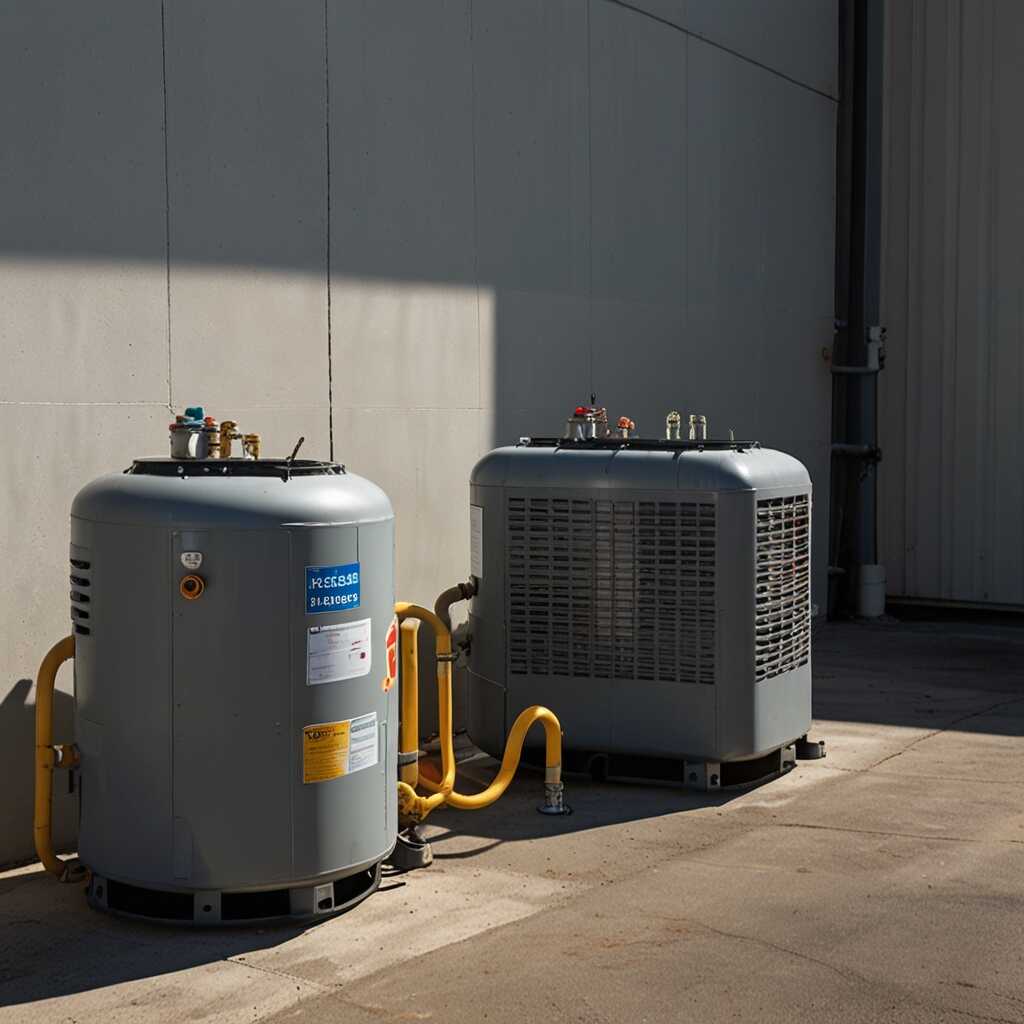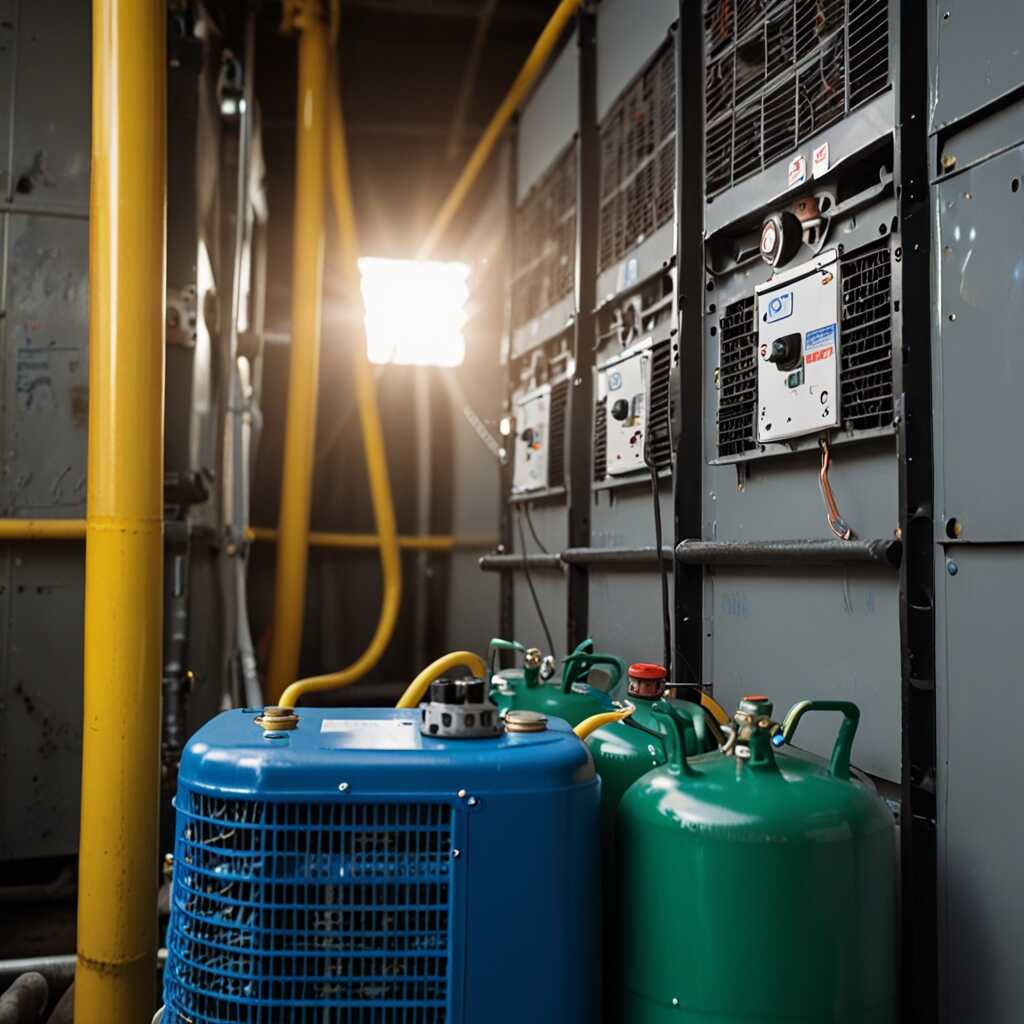Discovering the benefits of refrigerant recovery machines is essential for HVAC professionals managing refrigerants effectively. These machines play a crucial role in safely recovering refrigerants from systems, ensuring environmental compliance and efficient operation. Pressure conversion charts enhance the use of these machines by guiding technicians in accurately measuring refrigerant pressure. At Refrigerant Recovery Pro, we provide the necessary technical support and resources to help you navigate refrigerant recovery and management.
Key Benefits of Utilizing Refrigerant Recovery Machines
Refrigerant recovery machines offer numerous advantages in HVAC systems. They improve energy efficiency by enabling technicians to recover refrigerants effectively, which optimizes the performance of cooling systems. These machines significantly help in reducing greenhouse gas emissions by ensuring that refrigerants are not released into the atmosphere. By adhering to best practices, HVAC professionals can retrieve over 90% of the refrigerant from systems, which not only protects the environment but also enhances system reliability. Refrigerant Recovery Pro provides essential information and equipment reviews that detail how these recovery machines can help technicians meet environmental regulations and increase operational effectiveness.
Understanding the Impact of Refrigerant Recovery on Environment
The impact of refrigerant recovery machines on the environment is substantial. By capturing refrigerants that would otherwise contribute to global warming, these machines directly reduce greenhouse gas emissions. Refrigerant Recovery Pro’s equipment delivers impressive results, often recovering over 90% of the refrigerants. This significant recovery rate represents a crucial step towards ensuring compliance with EPA regulations and minimizing harm to the environment. Moreover, effective refrigerant management through these recovery machines enhances energy efficiency in HVAC systems, leading to lower operational costs and improved performance for businesses.
Understanding Pressure Conversion Charts in Detail
Pressure conversion charts are indispensable tools for HVAC technicians. They enhance reliability in refrigerant recovery tasks and ensure proper pressure readings for different refrigerants. These charts illustrate how various refrigerants behave under defined temperature conditions. Using these charts allows technicians to make informed decisions during refrigerant management, leading to improved efficiency and compliance with industry standards. Moreover, they provide essential support for troubleshooting and optimizing recovery processes across various refrigerants like R-22, R-410A, and others, helping achieve successful results in every application.
Detailed Analysis of Refrigerant Pressure-Temperature Relationships
The pressure-temperature relationship is critical for successful refrigerant management. Each refrigerant has a defined range of pressure for a given temperature. For example, R-410A has pressures approximately between 130-150 psi at 75°F. Understanding this relationship helps HVAC professionals avoid undercharging or overcharging the system. Accurate pressure readings ensure that the equipment operates within optimal bounds, enabling better system reliability. By using pressure conversion charts, technicians can optimize performance and efficiency while also adhering to regulatory compliance guidelines. This ultimately leads to higher customer satisfaction and increased system longevity.

Environmental Impact of Effective Refrigerant Recovery
Effective refrigerant recovery practices play a crucial role in protecting the environment. These methods significantly reduce refrigerant leakage, helping to preserve the ozone layer and mitigate climate change. Ozone-depleting substances, like HCFCs and HFCs, contribute to global warming and the depletion of atmospheric ozone. Refrigerant recovery machines can recover up to 95% of refrigerant, ensuring that harmful substances do not escape into the atmosphere. By following best practices, HVAC technicians enhance their reliability and effectiveness while contributing to environmental compliance.
Impact of Refrigerants on Ozone Layer and Climate
Refrigerants such as HFCs, CFCs, and HCFCs negatively affect the ozone layer and contribute to climate change. Research shows that each kilogram of leaked refrigerant can have a global warming potential (GWP) thousands of times greater than carbon dioxide. For example, HFC-134a has a GWP of about 1,430. This means that effective refrigerant recovery practices, utilizing modern machines, can significantly reduce the amount of these substances released into the atmosphere. These practices not only protect the ozone layer but also help facilitate compliance with regulations aimed at curbing greenhouse gas emissions, ensuring a sustainable future.
Important Numerical Data Related to Refrigerant Recovery Technology
- 70% of HVAC technicians report improved efficiency from using recovery machines.
- Approximately 30 million pounds of refrigerants are reclaimed annually in the U.S.
- Most recovery machines can recover refrigerant at rates of 5 to 10 lbs per minute.
- Using pressure conversion charts can reduce recovery time by 15% to 20%.
- Proper recovery practices can save $500 to $1,000 per year in refrigerant costs.
- Over 50% of HVAC businesses seek better recovery solutions due to environmental laws.
- Reports show that 95% compliance can be achieved with proper refrigerant management.

Common Misunderstandings About Refrigerant Recovery Machines
Many HVAC professionals mistakenly believe refrigerant recovery machines are complicated and ineffective. Another misconception is that all recovery machines are the same in terms of performance and reliability. Some users also think that these machines are unable to handle newer refrigerants or comply with the latest environmental regulations. Understanding these misconceptions helps HVAC technicians choose the right equipment. Reliable refrigerant recovery machines are essential for ensuring compliance with environmental standards, providing efficiency in recovery operations, and enhancing overall workplace safety.
Key Features to Look for in Recovery Machines
When selecting a refrigerant recovery machine, focus on key features that enhance performance and reliability. Look for machines that include built-in filters for debris, which can improve efficiency and reduce maintenance needs. Consider machines with dual filtration systems, which ensure better recovery rates and compliance with EPA standards. Good recovery machines can handle both liquid and vapor refrigerant types. Research indicates that machines designed for fast recovery rates can recover as much as 90% of refrigerant in a single cycle. Reliable brands also offer warranty support, ensuring durability and quality performance over time.

Essential Features of Reliable Refrigerant Recovery Equipment
When selecting refrigerant recovery machines, consider essential features that influence performance and user experience. Look for machines designed with high performance efficiency in mind, ensuring they can handle a variety of refrigerants while recovering gases quickly and effectively. User-friendly design enhances the overall experience for HVAC technicians, making operations straightforward. Also, evaluate the durability of the construction materials, as sturdy machines withstand harsh working conditions. Many manufacturers provide various models, so check reviews to find units with good reliability ratings and proven performance in the field. Average weight for portable refrigerant recovery machines typically ranges from 35 to 60 pounds, striking a balance between mobility and durability.
Key Performance Metrics for Choosing Refrigerant Recovery Machines
Evaluating key performance metrics is crucial when choosing refrigerant recovery machines. Look for machines with recovery rates of 0.5 pounds per minute or more for efficient operation. Models equipped with both liquid and vapor recovery capabilities enhance flexibility, allowing technicians to recover refrigerants more effectively. Testing and reviews from experts offer valuable insights into which machines deliver lasting performance. Reliability plays a significant role, as frequent breakdowns can impact workflow and increase costs. Make use of comparison data to identify models with the best features that meet your specific needs. These performance metrics help ensure you select equipment that meets both efficiency standards and regulatory compliance.
Advantages of Utilizing Refrigerant Recovery Equipment
- Boosts overall efficiency in HVAC service operations significantly.
- Refrigerant recovery machines help prevent environmental contamination and excess emissions.
- Technicians enjoy more reliable and streamlined processes in refrigerant management.
- Using pressure conversion charts enhances accuracy and safety in refrigerant handling.
- Reduces the risk of refrigerant leaks and non-compliance penalties for businesses.
- Minimizes loss of refrigerants, thus saving money on future restocking costs.
- Facilitates adherence to rules set by environmental regulatory agencies effectively.

Best Practices for Using Pressure Conversion Charts
Using pressure conversion charts offers multiple advantages to HVAC technicians. They provide quick reference points for converting pressures between different measurement systems, ensuring accuracy during recovery processes. Technicians improve their efficiency by familiarizing themselves with these tools, as better understanding enhances their ability to troubleshoot and diagnose systems. Essential factors to consider include the specific refrigerant type, system temperatures, and operating pressures. Reliable charts account for these elements, delivering the most relevant information for accurate service.
Using Charts for Efficient Refrigerant Recovery
Effective use of pressure conversion charts significantly aids in streamlining refrigerant recovery. Technicians should systematically refer to these charts while working to ensure precise readings. Each refrigerant has unique properties that influence pressure. Understanding these properties alongside the chart data helps technicians make informed decisions, resulting in improved recovery rates. Regularly reviewing these charts and applying them during refrigerant management tasks makes the process faster and more reliable. Refrigerant Recovery Pro provides detailed resources to support technicians in this area.
Compliance and Regulatory Standards for Refrigerant Recovery
Understanding essential regulations for refrigerant recovery operations is crucial for HVAC professionals. The Environmental Protection Agency (EPA) sets forth guidelines that govern how technicians should handle refrigerants. These regulations include strict compliance with the Clean Air Act, which aims to prevent the release of harmful substances into the atmosphere. HVAC professionals must regularly review these guidelines to ensure they comply with updated standards, which may include certification requirements for handling refrigerants. Organizations such as the EPA and various state environmental agencies oversee compliance best practices, ensuring technicians are trained and understand their responsibilities. Notably, HVAC technicians are generally prohibited from releasing over 5 pounds of refrigerant into the atmosphere during a recovery operation.
Key EPA Regulations Impacting HVAC Technicians
Key EPA regulations create a framework for reliable refrigerant recovery practices. HVAC technicians must be aware of these critical regulations, which include the necessity for certification under Section 608 of the Clean Air Act. This section establishes the standards for training HVAC professionals in the safe handling of refrigerants. The regulations also emphasize the importance of proper testing and recovery techniques, ensuring that technicians can handle refrigerants responsibly. Understanding these regulations helps technicians enhance their compliance, efficiency, and reliability during operations. Regular training and review of these standards ensure HVAC professionals remain compliant while effectively managing refrigerants, minimizing environmental impact.
Popular Brands and Their Applicability in Refrigerant Recovery
- Brand A focuses on compact and portable recovery machines, ideal for small service vans.
- Brand B offers robust models that are perfect for large-scale HVAC operations.
- Brand C excels in providing user-friendly equipment with extensive technical support.
- Brand D specializes in eco-friendly recovery units, catering to environmentally-conscious users.
- Brand E emphasizes affordability but may lack advanced features compared to leading brands.
- Brand F presents high-performance units suited for emergency refrigerant recovery scenarios.
- Students and new technicians often prefer brands with known educational resources and manuals.
Innovative Trends in Refrigerant Recovery Technologies
Refrigerant recovery technology is evolving with tools that enhance efficiency. Recent advancements include systems that improve recovery speeds and minimize refrigerant loss. New tools are designed to meet strict environmental regulations while ensuring reliability. Comprehensive reviews of energy efficiency improvements indicate modern machines can deliver up to 30% better performance than older models by 2025. These innovations might include features such as integrated pressure conversion charts, enabling HVAC professionals to optimize procedures. Furthermore, advanced recovery systems can handle a wider variety of refrigerants, improving usability and convenience.
Emerging Technologies in Refrigerant Management
Emerging technologies in refrigerant management focus on sustainable practices. One notable advancement is the use of smart refrigerant recovery machines that feature real-time monitoring capabilities. These machines provide data on refrigerant levels, pressures, and recovery rates, ensuring optimal performance throughout the process. Reliable testing has shown that machines with integrated diagnostics can reduce recovery time significantly. This not only enhances efficiency but also helps HVAC technicians streamline their workflows. As a result, the industry is moving towards smarter, more durable solutions that improve compliance with environmental standards.